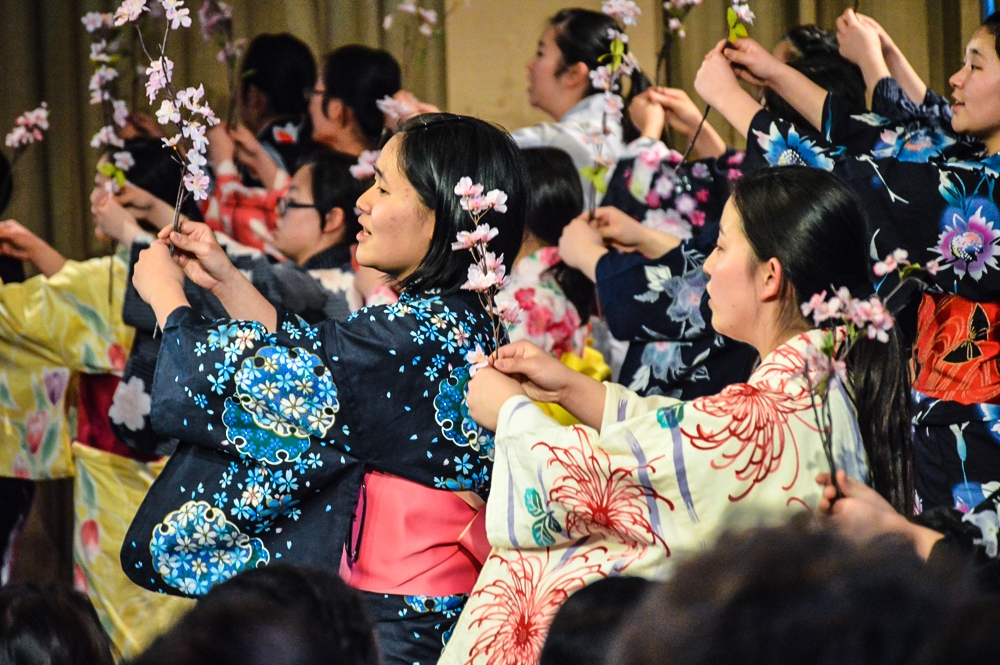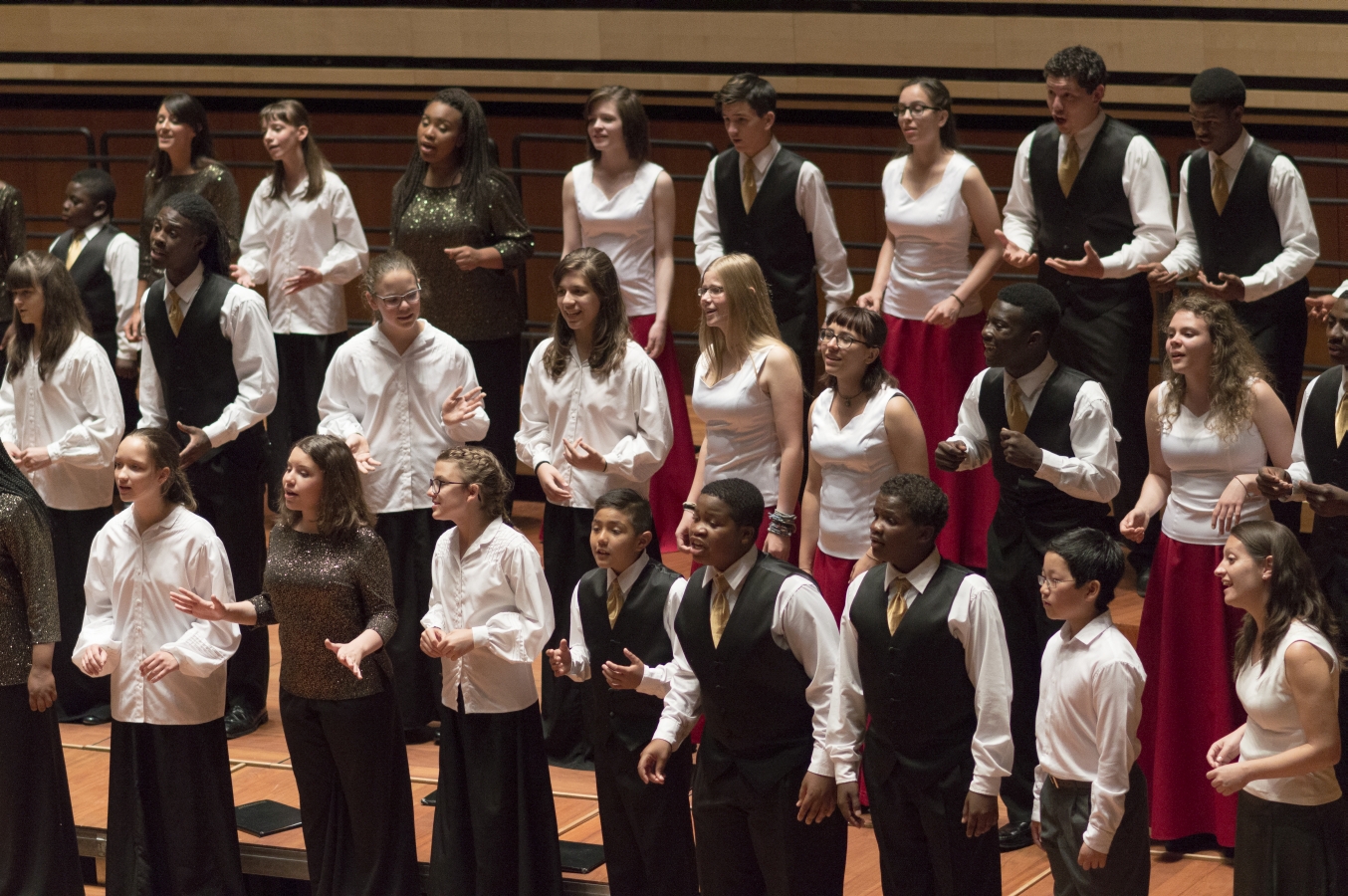by immusic | Nov 30, 2022
Category
vocal
rhythm
Age
10+
Number of participants
10-20
Duration
approx. 40 min.
Working method
group work
Musical abilities of the trainers
1 2 3 4 5 6
Equipment and instruments
- music player / app to play the song
- optional: percussion instruments
Competences
- learning and memory skill
- cultural sensitivity
- collaboration
- attention
- concentration
- rhythm recognition
Echo Game
Playful learning of a Japanese children’s song with a possible interpretation with echoing sounds, movements
AIM
The well-known Japanese children’s song offers the participants simple and easy-to-learn singing. Echo play processing requires attention and concentration and creates a special atmosphere, especially with adding instruments (drum), movements or play with lights.
Description
- The facilitator talks about the significance of children’s songs in music and poetry in everyday life and in general. After that they listen to the song in Japanese.
- Facilitator shares the translation of the Japanese text.
- The group sings the song while listening to the recording, they practise till they know the melody with confidence.
- The group can try to sing the melody in canon as signed in score (Version 1, Version 2).In version 1, we divide the team into two groups. Thus, the two groups sing the same melody, only shifted in time. The first group starts singing the melody and when they get to number 2, the second group starts over.
The version 2 is much more difficult, there we divide the team into three groups, and they sing the melody by directly entering one after the other.
Simple echo game:
Facilitator starts the eco game with the group: first participants form 2 groups and they stand opposite to each other, not close to each other. On the facilitator’s signal the first group starts to say “ho” or “ho-ho” or “ho-ho-ho” and the other group echo’s this. This game can be combined with movement, drums or flashing lights (this work better in the evening).
Lyrics
Ho ho hotaru koi
atchi-no mizu-wa nigai-zo
kotchi-no mizu-wa amai-zo
ho ho hotaru koi
Translation – Come Firefly
Fly, fly, firefly, come
The water over there tastes bitter
The water over here tastes sweeter
Fly, fly, firefly, come
by immusic | Nov 30, 2022
Category
vocal
Age
10+
Number of participants
8-30
Duration
approx. 35 min.
Working method
group work
Musical abilities of the trainers
1 2 3 4 5 6
Equipment and instruments
- music player / app to play the song
- optional: percussion instruments
Competences
- learning and memory skill
- cultural / intercultural sensitivity
- improvisation
- perception
- attention
- concentration
- rhythm recognition
Shosholoza
An easy-to-learn, often-repeated African melody that can be paired well with exercises such as the Storm game (13).
AIM
The melody is extremely simple and can be learned quickly based on the group leader or one of the videos. The melody can be accompanied by a wide variety of rhythms and movements, which encourage the participants to develop creative solutions.
Description
- Listening of the song performed by the facilitator or choose from the useful links below
- Explanation of the text
- Learning melody and lyrics with many repetitions
- Applause and drumming of different rhythms associated with the melody
- Add movement improvisation in smaller groups
Lyrics
Shosholoza
Kulezontaba
Stimela siphume South Africa.
Wen u ya baleka
Kulezontaba
Stimela siphume South Africa
Translation:
Work, work, working in the rain
Till there’s sun again
Shosholoza
Push, push pushing on and on
There’s much to be done
The steam train to South Africa.
This song meaning: “Shosholoza, this train is gaining speed and steaming for South Africa”.
Comments for facilitators
Shosholoza has become a national traditional song in South Africa for past decade.
“Shoshaloza” has no specific meaning & was derived from the onomatopoeic & repetitive sound of the train wheels transporting the migrant workers back to their families in Rhodesia (Zimbabwe).
by immusic | Nov 30, 2022
Category
vocal
Age
12+
Number of participants
6-40
Duration
approx. 20 min.
Working method
group work
Musical abilities of the trainers
12 3 4 5 6
Equipment and instruments
- music player / app to play the song
Competences
- cultural / intercultural sensitivity
- empathy
- attention
- creativity
- movement coordination
- cooperation
- concentration
- sense of rhythm
Be Zulu
Getting to know the music and dances of a distant culture.
AIM
Initiate movement improvisation through an easy-to-learn Zulu folk song based on the movements of the singers in the video.
Description
With the help of the facilitator or the videos, the participants learn the Zulu tune „Siyahamba”. (With the help of the recordings and sheet music, it can be learned in several parts, but it is also absolutely perfect in unison.)
They watch the videos again and observe the movements the Africans make while singing the song.
They try them out together or in smaller groups.
The participants create their own choreography from the movement elements they like best, which they perform while singing the song or playing the recording.
LYRICS
Siyahamba, ekukanyen’ kwenkos’,
Siyahamba, ekukanyen’ kwenkos’,
Siyahamba, siyahamba, oh,
Siyahamba ekukanyen’ kwenkos’.
We are marching in the light of God.
We are marching in the light of God.
We are marching, we are marching, ooh,
We are marching in the light of God.
by immusic | Nov 29, 2022
Category
vocal
Age
12-25
Number of participants
8-12
Duration
approx. 35 min.
Working method
Musical abilities of the trainers
1 2 3 4 5 6
Equipment
and instruments
- music player / app
to play the song
Competences
- learning and memory skill
- collaboration
- attention
- concentration
- creativity
- sense of rhythm
Charlie over the Ocean
The music game inspired by the aquatic life is suitable
and easy for those participants who are inexperienced
in music or for musicians at all levels.
AIM
The main objectives of these music activities are to introduce participants to the joy of playing and singing songs together, as well to provide some knowledge of musical experience, understanding and enjoyment.
Description
Before starting the game, the facilitator asks the young people to think of something that is in the ocean, seas. Let them use their imagination, what they want to see more closely, get to know.
The participants sing or learn the song several times so that they no longer have to concentrate on the sounds and the text during the game. When the word {blackbird} is reached in the third line of the text, everyone must replace it with the word they thought of at the beginning of the game, but it is important to keep the rhythm (e.g. speed up the syllables).
- Participants are standing in a circle, hands are clasped, and the instructor is on the outside.
- With a steady beat he/she begins walking around the outside of the circle singing the solo, echoed by the group. Don’t forget to use the words that everyone has come up with!
- On the last word, he/she taps the participant closest to him/her. Racing around the circle, if the chosen player tags the first participant before they reach the opening in the circle they win their place back and the song is sung again. If not, they become the new soloist.
Lyrics
Solo:
Charlie over the ocean,
Charlie over the sea,
Charlie caught a {blackbird}
Can’t catch me.
Group:
Charlie over the ocean, (echo)
Charlie over the sea, (echo)
Charlie caught a {blackbird} (echo)
Can’t catch me. (echo)
comments for facilitators
During the activities be care of the steady beat.
There are countless versions of these popular songs, and they have varied in lyrics and melody over the years, so you can learn any version.









Recent Comments